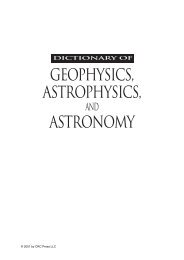tc dokuz eylül university institute of social sciences translation and ...
tc dokuz eylül university institute of social sciences translation and ...
tc dokuz eylül university institute of social sciences translation and ...
Create successful ePaper yourself
Turn your PDF publications into a flip-book with our unique Google optimized e-Paper software.
author puts before every reader from 7 to 70. Pacek explains this characteristic as<br />
follows:<br />
The fact that Alice functions on two levels nowadays might<br />
have an effect on the translator’s approach to <strong>translation</strong>. If<br />
the translator takes into account Carroll’s original intent, he<br />
would be justified in treating Alice as a book for children<br />
only. However, nowadays children do not enjoy the book to<br />
the same extent that they did in the past. This can be best<br />
illustrated by the fact that there have been numerous<br />
simplified versions <strong>of</strong> Alice, while the original text is less<br />
<strong>of</strong>ten read <strong>and</strong> appreciated by young readers. On the other<br />
h<strong>and</strong>, as adults find the book a continual source <strong>of</strong> pleasure<br />
<strong>and</strong> interest, it could be said that it has now become a book<br />
for adults, <strong>and</strong> it would therefore seem quite legitimate to<br />
translate Alice as a book predominantly for adults. The third,<br />
<strong>and</strong> most challenging option, <strong>and</strong> perhaps the most satisfying<br />
one, would be to render the book on both levels at the same<br />
time (Pacek, 2002; 306).<br />
The same aspect <strong>of</strong> the book was also discussed in Weissbord’s article,<br />
whether it is read by children or adult readers. In Alice in Wonderl<strong>and</strong>, the use <strong>of</strong><br />
puns has a central role in producing an ambivalent text, that is, one which can<br />
function at one h<strong>and</strong> <strong>and</strong> the same time in children’s literature <strong>and</strong> in adult literature<br />
(Weissbrod, 1996; 219). At the time when the book came out, it was the most<br />
popular children’s book <strong>of</strong> the period in Engl<strong>and</strong> (Green in Weissbord). Weissbrod<br />
supports this opinion suggesting that Carroll himself did not comply with the<br />
conventions <strong>of</strong> the children’s literature in that time in that he forsook the moral<br />
which was the major characteristic <strong>of</strong> the children’s books in English children’s<br />
literature until then, both realistic <strong>and</strong> fantastic. As a result <strong>of</strong> this, he adapted Alice<br />
to the adult literary system <strong>and</strong> set it apart from other children’s books <strong>of</strong> that period<br />
(Weissbrod, 1996; 222). We deduce from reference to Bertr<strong>and</strong> Russell that Alice<br />
became so popular because it had no morals. That it was so different from others in<br />
the same genre made it attractive to the children <strong>of</strong> that time. This situation is not the<br />
same any more though. Shavit <strong>and</strong> other researchers <strong>of</strong> Carroll’s works believe that<br />
nowadays adults read Alice much more than children do because the latter are<br />
surrounded by easy-read or visual materials, which turns their attention away from<br />
more dem<strong>and</strong>ing reading. For this reason, the adaptations <strong>of</strong> Alice are preferred by<br />
40
















